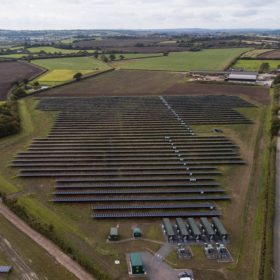CIGS flexes for takeoff
Versatile CIGS modules are opening doors to a range of new applications that have the potential to change how we integrate solar energy into urban communities, according to Michael Powalla from the Centre for Solar Energy and Hydrogen Research Baden-Würtenberg (ZSW) and Rutger Schlatmann from the Helmholtz-Zentrum Berlin (HZB).
High-powered pathways
Last month’s SNEC exhibition in Shanghai featured a number of discussions about next-next-generation manufacturing. And with a range of technology pathways now available — including heterojunction (HJT), n-type TOPCon and even various tandems on the cell level, as well as bifacial, shingled, paved or ‘closely packed’ configurations on the module level — the materials supply business is becoming ever-more diverse. But for Ethan S. Simon, the CTO of DuPont’s billion-dollar Photovoltaics and Advanced Materials division, the move to HJT may not occur at the speed that many expect.
Inverter issues
PVEL’s inaugural inverter scorecard is showing up the need for much more scrutiny on the reliability of inverters. But are developers and EPCs even paying attention?
Supplying an exponential rate of innovation
While solar’s competitive position in the global energy mix has never looked more promising, the manufacturing segment remains ruthlessly competitive. Since joining the industry in late 2018, Heraeus Photovoltaics President Martin Ackermann has come to believe that the silver paste provider needs to be close to its customers in order to find refuge from race-to-the-bottom pricing in the face of rapid technological change.
On the Road with pv magazine
Where we’ve been: REI 2019 New Delhi once again hosted India’s largest solar event last month, the Renewable Energy India Expo (REI), and with some 12-14 GW of PV expected to be installed in the country over the next year, there was much talk of the sector ramping up among attendees. Local manufacturers such as […]
Green shoots of recovery
There has been significant progress in the decarbonization of the electricity supply in Great Britain in recent years, underscored by a record run of 19 days of zero coal generation in May and June 2019. With National Grid’s stated aim of operating a carbon-neutral electricity system by 2025, the co-location of PV with battery storage could play a key role. The proposition offers the twin benefits of enabling increasingly high renewables penetration while simultaneously improving network stability. Adam Sharpe of Everoze explores the role of co-located PV and energy storage assets within the context of the UK’s future decarbonization plans.
On the Road
Where we’ve been – Energaïa: Montpellier, France France’s leading renewable energy event had two important missions this year: (i) build on the success of the 2017 event by further growing the presence of the solar PV industry; and (ii) provide a clear road map for solar, and other renewables, to transform the country’s energy […]
Primary balancing power on wheels
The smart integration of electric vehicles has made another step forward. A consortium of The Mobility House, Nissan, and Enervie has integrated a Nissan Leaf into Germany’s primary balancing power market.
Do you walk the talk?
Sustainability. Cradle to cradle. The circular economy. These issues are reaching a tipping point. We need to recognize them, own them, and build them into our business models. Indeed, by being true green leaders and encouraging others in the industry to do the same, we’ll not only be a driving force behind the right revolution […]








